Microsoft has released a new Technical Preview of Project Honolulu (version 1711). Project Honolulu is a web console for the management of Windows servers. In other words, a kind of "Server Manager" in the browser. Although it is still a technical preview that is not yet ready for productive use, there is already some potential. I already like it more than the "old" Server Manager.
The Technical Preview of Project Honolulu can be downloaded here:
- https://www.microsoft.com/en-us/software-download/windowsinsiderpreviewserver?wa=wsignin1.0
- (you must be registered with a free Windows Insider account to download)
The installer is just 30 MB in size and can be installed on Windows Server 2012, 2012 R2, 2016 and Windows 10. Windows Management Framework 5.1 is also required for Windows Server 2012 and 2012 R2.
Here is an overview:
- https://docs.microsoft.com/en-us/windows-server/manage/honolulu/honolulu#supported-operating-systems
I installed the software on a bare Windows Server 2016 for the test. The installation is actually self-explanatory and can be completed in just a few steps:
I left it with a self-signed certificate for the time being and only preset port 443. No more information was required during the installation.
After installation, the first start takes place in the browser. Internet Explorer is not supported, which is somewhat of a disadvantage as Edge is not available on a Windows server:
I then installed Chrome on the test server without further ado.
In my opinion, the operation is also self-explanatory; I added the servers to my test environment directly. This also worked immediately without any problems:
My 4 test servers were added within a minute and can already be managed:
The speed is immediately noticeable, the graphs load immediately and show the live data. You could be forgiven for thinking that the Task Manager can now also be displayed in the browser.
The event log also displays the results very quickly in the browser:
The most important management functions are already integrated:
- Event display can be displayed
- Device manager can be displayed
- Certificates can be displayed
- Files can be uploaded and downloaded
- Firewall rules can be edited
- Local users and groups can be edited
- Network settings can be defined
- Details of processes and services can be displayed
- Registry can be displayed and edited
- Activate/deactivate Remote Desktop and call it up in the browser
- Roles and features can be installed and uninstalled
- Windows updates can be displayed and installed
The Hyper-V role can already be managed, but other services such as the Active Directory are not yet integrated.
You can even open a remote desktop session directly in the browser:
The RDP connection could be used without further configuration and is also pleasantly fast. (Note to self: I really must try this out with the iPad)
While I was writing this little article, I had a look around Project Honolulu and I have to say that I really like it! In my opinion, there is a lot of hidden potential here. So it's worth taking a look.
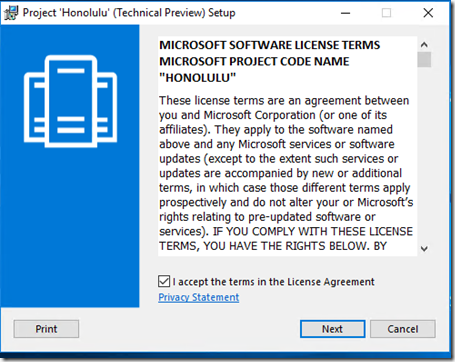
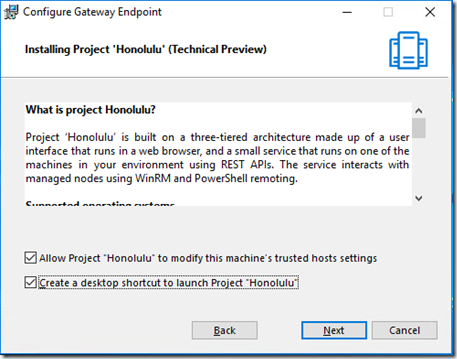
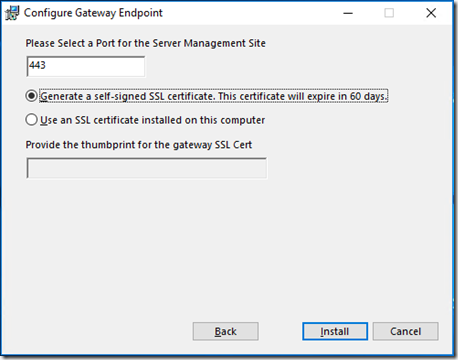
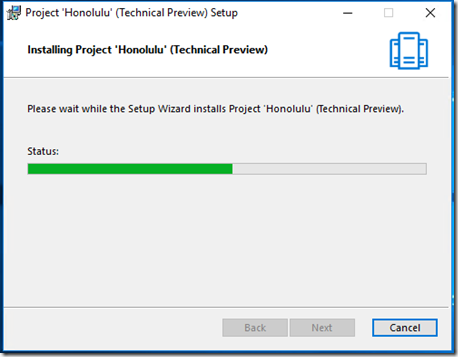
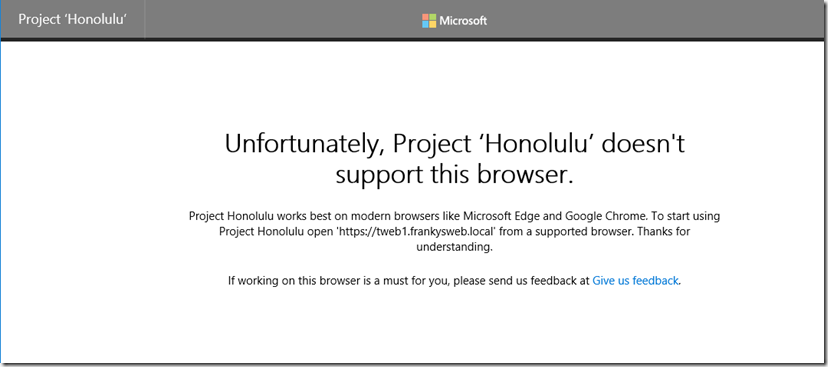

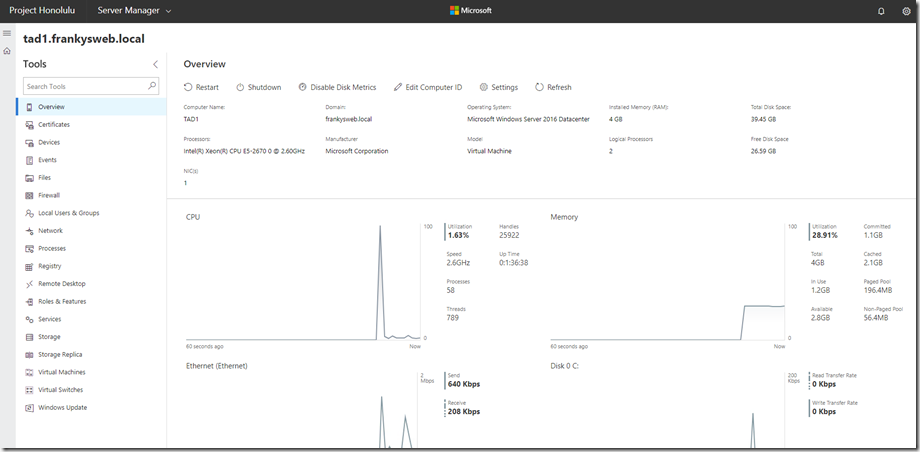
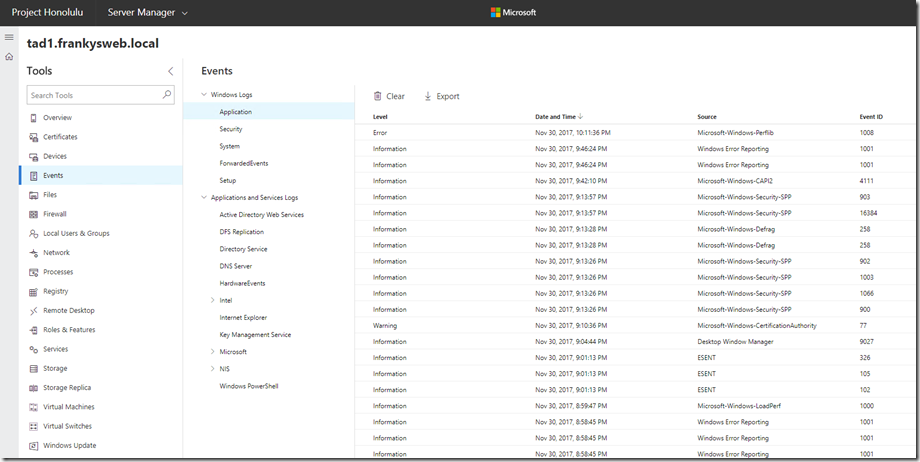
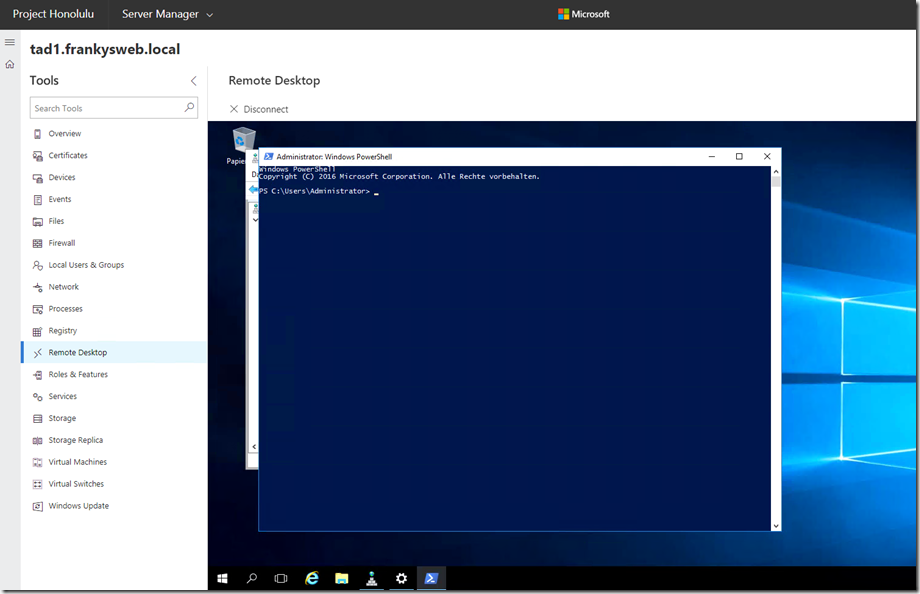
Toller Beitrag, auf den ersten Blick ein großartiges Werkzeug.
Schön finde ich die Kategorisierung in einfache Clients, standalone Server und Failovercluster.
Die integrierte RDP-Funktion ist natürlich noch das Tüpfelchen auf dem i.
Hy,
Habe da noch einen Schreibfehler gefunden ;)
„Ich habe für den Text die Software auf einem nacktem Windows Server 2016 installiert.“
Müsste wohl „Ich habe für den Test…“ lauten.
Gruss
Michi
Hallo Nils,
versuch es einmal hier: https://www.microsoft.com/en-us/evalcenter/evaluate-windows-server-honolulu
Gruß,
Daniel
Bei mir klappt aktuell der Download-Link nicht. Find auch keinen anderen.